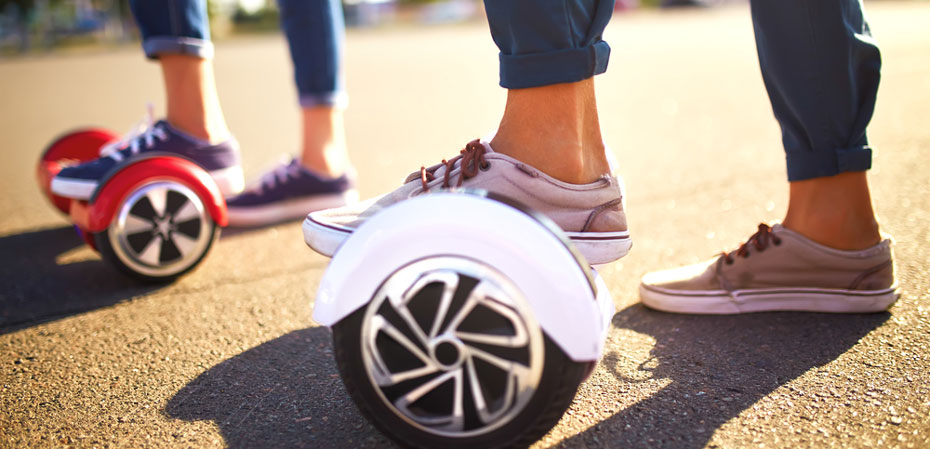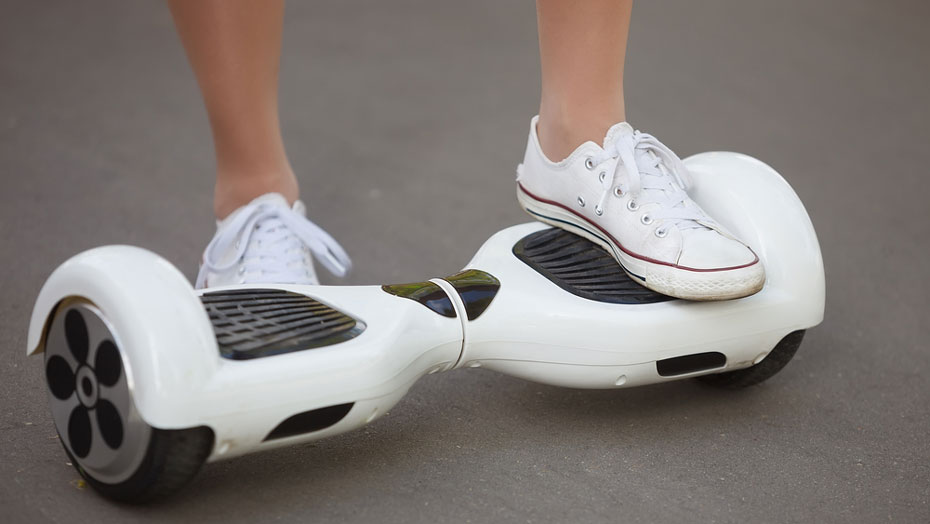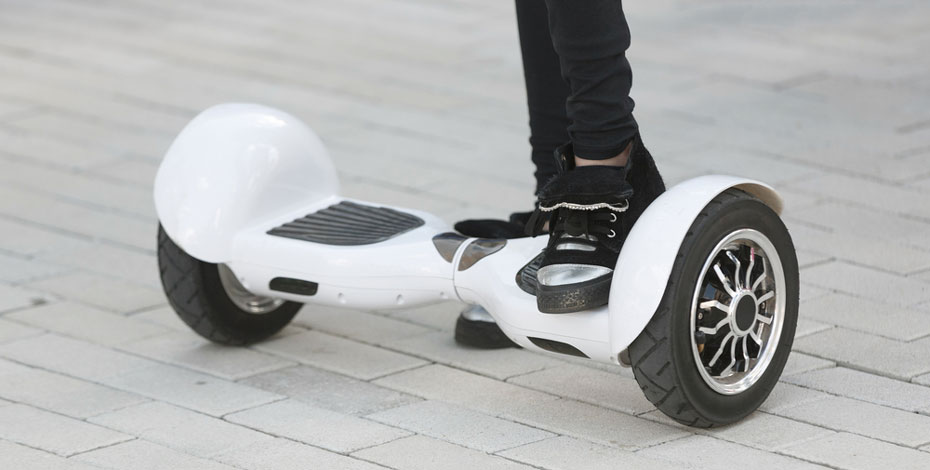If you’re new to the world of hoverboards, getting on and off them can take some getting used to. In this guide, we’ll try to save you some sore knees and bumped bums and get you on and off your board safely.
Before we get started though, it’s always worth mentioning that it is possible to hit your head when falling off a hoverboard, so it’s a good idea to get a helmet just in case. OK on with the guide.
Why are hoverboards so hard to get on and off?

Unlike their big brothers, the Segways, hoverboards are much smaller and lighter meaning they’re not able to auto-balance your whole weight and stop you from falling backwards or forwards.
While we’re not talking skateboard or unicycle difficulty here, there’s still some balancing to do. This is a board between two wheels after all.
How do you get on a hoverboard?
- Pick your dominant foot – While everyone knows if they’re left or right-handed, not many of us have to think about which is our go-to foot! Decide which foot you’d most likely kick the ball with, or pick something off the bottom of a pool with and then use that to step onto your hoverboard first.
- Step on and position your foot as far to the left (or right) as you can – What you want to aim for with hoverboards is to get as wide a stance as you can. This will help give you a more sturdy base and it’s a good habit to get into. Make sure your foot goes as far to the side of the hoverboard as possible, not close to the middle.
As with the bigger Segways, always step off the back as doing som from the front often leads to the hoverboard zooming forwards and hitting your ankles, or can spill you forwards.
How do you get off a hoverboard safely?
If you’re having trouble dismounting your hoverboard, don’t worry. You’re not alone. What should be a simple thing to do is actually not that straightforward. If you’re finding your hoverboard starts spinning, vibrating, or shooting off when you step off, even if you’ve followed other guides, here are some things you can try:
1) Step off backwards

Anyone who hasn’t owned a hoverboard before, or hasn’t watched any youtube videos on how to ride one might have made the mistake of stepping off forwards.
It’s the kind of mistake you only make once!
Like larger Segways, these boards must be exited via the rear; stepping forwards will result in some serious spinning or even getting run over by your own board. Always get off backwards. Your ankles will thank you for it.
2) Remove the first foot fast
A lot of people think they’ve been landed with a dodgy hoverboard the first few times they step off it. It’s easy to see why. Once it starts flipping out and spinning like a top, they look like something is wrong.
The problem is even lingering on the pressure pad a tiny bit will trigger the motor and make it perform erratically. Really focus on whipping your foot of quickly (like you stood on a hot coal!) and you should find it’s much smoother to get off and your hoverboard behaves itself.
3) Once the first foot is on the floor, get the other one off quickly
If your problem is mainly that the board spins when you’re trying to get off, it’s likely because one foot is still on the pressure pad. Although it’s disconcerting, it’s also a normal behaviour. Your hoverboard isn’t faulty. As soon as the first foot is don’t the floor, practice getting the second one off as fast as possible.
Any delay between taking your feet off the board will give you the crazy spinning that a lot of new riders experience.
4) Keep practising
/It might sound obvious but it takes time, experience and confidence to be able to make a ‘clean getaway’ when selling off your hoverboard. Don’t be put off (even by the odd whack on your ankle). Most hoverboard users find getting off hard at first. After a bit of practice, you’ll be able to do it every time.
5 easy tips to mastering stepping on and off
If you or your child is struggling to get to grips with balancing on your hoverboard, here are some quick and easy tips you can try to make it easier.
- Don’t turn it on yet – A really good way to get a feel for stepping on and off your hoverboard, without the fear if it spinning or flying off before you’re ready is to not turn it on in the first place. Practice stepping on and off the board without it being powered on is a great way to get a feel for it and to get your balance.
- Use a table or other sturdy surface – If you’re wobbling around and just can’t get the feel for it, find something in your home (or garden)
- Practice on a soft surface – A lot of people think you’ve got to use a hoverboard on hard, flat surfaces but they’re equally as happy running on carpet or grass. The only difference being if you take a tumble while learning it you’ll have a much softer landing on those surfaces.
- Wear some flat shoes – If you’re trying to learn stepping on and off your board in socks or bare feet and are finding it stops and starts, try putting on your favourite trainers. This can often help activate the foot pedals and eliminate some shakes and jitters.
- Hold the rider’s hand – This is especially useful for younger hoverboard riders. If they’re struggling to get their balance, try to hold one or two of their hands until they get the hang of it. Thankfully it’s a lot easier than learning to ride a bike and you won’t have to assume that awful stooped position to do it. (Just don’t stand in front of behind the board if you value your ankles’ safety!)
Summing up: Mounting and dismounting your board like a pro

Although your ankles might hate you for getting a hoverboard, they’re well worth persevering with when it comes to getting on and off them. Don’t worry if it feels awkward or you need more practice than other people. Because the key is just experience. Follow the steps above, keep practising and like anything else, it will become second nature before you know it.